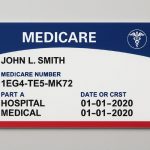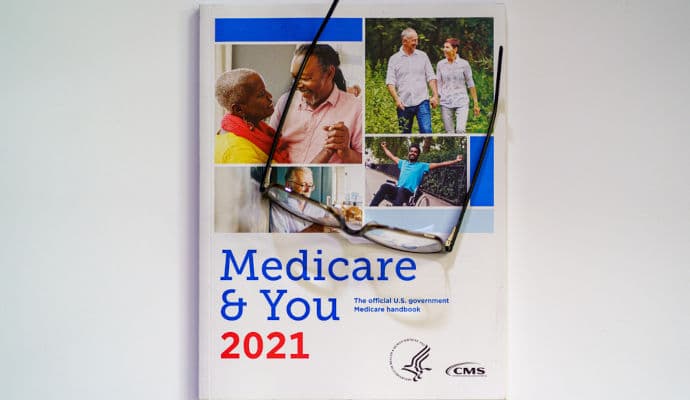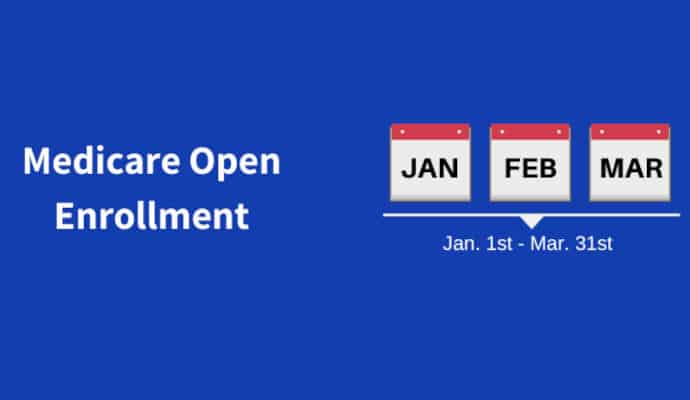
Choosing the right Medicare plan can be confusing. Best Company explains how Medicare plans work and the differences between Original Medicare and Medicare Advantage.
Medicare can be challenging to navigate, especially if you’re unfamiliar with how it works.
One of the initial decisions to make is choosing between Original Medicare and a Medicare Advantage plan.
Many search for Medicare supplement plans compared to Medicare Advantage plans. However, Medicare supplement plans pair with Original Medicare.
Find out how Medicare plans work and the differences between Original Medicare and Medicare Advantage.
Original Medicare
Original Medicare consists of two parts: Part A and Part B. These parts are also referred to as Traditional Medicare.
Part A is hospital insurance
In many cases, Part A is premium-free. It covers hospital stays, hospice, and some home health care.
To get Part A, you or your spouse must have been employed and paid Medicare taxes for at least 10 years and qualify for Social Security or Railroad Retirement Board benefits.
Medicare-covered government employment is also eligible.
For those paying a premium for Part A, the premium is capped each year. If you or your spouse have paid Medicare taxes for at least seven and a half years, you’ll pay a lower amount.
Part B is medical insurance
Part B premiums are based on income from two years ago.
Usually, Part B premiums are taken automatically from your government benefits (Social Security, Railroad Retirement Board, or Office of Personnel Management).
It covers preventive care, medically necessary treatment, and Durable Medical Equipment (DME). Medicare has a list of DME.
This DME coverage doesn’t include hearing aids. Dentures and acupuncture are also not covered by Medicare.
If you miss your Part B enrollment period, you’ll pay a penalty for the number of 12-month periods you’ve been without Part B coverage. The penalty can increase premiums by 10% per period.
Neither Part A or Part B cover prescriptions
These Medicare parts also don’t have annual limits on out-of-pocket expenses.
Other Medicare plans offered by private insurers address these concerns with Original Medicare: Medicare supplement plans (Medigap) and Prescription Drug Plans (PDPs).
Medigap plans are regulated by Medicare
Medigap plan options are consistent across companies.
Once you know which plan will work best for your situation, you’ll want to find a trustworthy carrier and a good premium rate.
Look at the insurer’s financial strength because high financial strength ratings indicate that an insurer is financially stable.
Customer reviews can also offer helpful insight on the customer experience.
Prescription Drug Plans (PDPs) are also referred to as Part D
Part D plans must follow Medicare guidelines.
Medicare groups medications and requires PDPs to cover at least one drug in each category.
This way you’re able to use a covered substitute if your preferred medication isn’t covered. You can also apply for an exception.
Each plan has a drug formulary that lists which medications are covered by the plan.
You can check this list for your medications and to understand which tier your drugs fall under. Each tier has different copay or coinsurance rules.
Plans vary by drug lists (formularies) and copay structures, so it’s important to understand these before enrolling in a plan.
Premium costs can vary by insurer.
Like Part B, you can pay a penalty on your premium if you do not have qualifying prescription drug coverage for a continuous 63 days or more following your Initial Enrollment Period. The penalty is a percentage of your premium.
Part D is infamous for the doughnut hole, or coverage gaps.
A coverage gap happens when your insurer has reached the plan’s limit for what it pays in cost-sharing. When the limit is met, you’ll start paying higher out-of-pocket costs for your prescriptions.
When the coverage gap closes, catastrophic coverage starts.
With catastrophic coverage, you’ll still make out-of-pocket payments for medications. However, there are limits on your out-of-pocket expenses.
Medicare Advantage (Part C)
Medicare Advantage plans are Part C of Medicare.
These plans offer the same coverage that Medicare Parts A and B do under one plan instead of two.
The biggest difference between Original Medicare and Medicare Advantage plans is that Medicare Advantage plans are fully managed by private insurers.
Many Medicare Advantage plans also offer qualifying prescription drug plans, so you don’t have to manage a third plan.
But not all plans do. Pay attention to whether the Medicare Advantage plans you consider include qualifying prescription drug coverage.
Medicare Advantage plans work similarly to typical health insurance plans
These plans have set provider networks and annual out-of-pocket maximums. These annual out-of-pocket limits help control your spending.
Since provider networks are set with Medicare Advantage plans, check the provider networks before enrolling to make sure your doctors are in-network.
Medicare Advantage plans offer additional benefits
Beyond the standard Medicare coverages, Medicare Advantage plans offer additional benefits like hearing aid discounts and fitness memberships.
Some even include limited dental and vision coverage.
Special Needs Plans (SNPs)
Special Needs Plans (SNPs) are Medicare Advantage plans geared to meet specific needs like dual eligibility for Medicare and Medicaid (DSNPs) or to care for chronic conditions.
Note: Please do your homework on any plans you consider. Recently, many large insurers offering Medicare Advantage plans have been accused of fraud and accused by health providers and other professionals of limiting “access to medically necessary care.”
Choosing between Original Medicare and Medicare Advantage
When choosing between Original Medicare and Medicare Advantage plans, you’ll want to carefully consider your coverage needs and monthly budget.
Compare Medicare Advantage plans by premium costs, out-of-pocket expenses, covered medications, and extra benefits.
For example, Medicare beneficiaries who travel regularly can find Original Medicare beneficial since care providers accepting Medicare are available across the United States.
Some Medicare supplement plans also offer coverage in foreign countries. Medicare Advantage plans can be more limited depending on their network structure.
However, if you’re interested in the additional benefits offered by Medicare Advantage plans, they can be a good fit.
Focusing on your specific needs, considering the trade-offs of Original Medicare and Medicare Advantage plans, and working with a trusted advisor can help you make an informed choice and find a good fit.
Recommended for you:
- Medicare Open Enrollment 2023: Minimize Costs, Maximize Coverage
- Get Medicare Advice From State Counseling Programs
- Medicare vs. Medicaid: What You Need to Know
Guest contributor: Alice Stevens has managed the health and life insurance content for Best Company since 2018. She’s passionate about conducting good research and understanding the details you need to know about insurance.













I would like to know how I can save on my prescription drugs. Also I would like to know how to pay for medical marijuana.
We aren’t familiar with programs that pay for medical marijuana, so you may want to contact your insurance company to find out more.
These articles include tips on how to save on prescription medications:
– 7 Ways for Seniors to Reduce the Cost of Prescription Drugs https://dailycaring.com/7-ways-to-save-money-on-prescription-drugs/
– 5 Options for Medications Not Covered by Medicare https://dailycaring.com/5-steps-to-take-when-medications-are-not-covered-by-medicare/
– 5 Ways to Afford Prescriptions in the Medicare Donut Hole https://dailycaring.com/5-ways-to-afford-prescriptions-in-the-medicare-donut-hole/
– Why Seniors Should Ask Pharmacists: How Much Will My Prescription Cost without Insurance? https://dailycaring.com/why-seniors-should-ask-pharmacists-how-much-will-my-prescription-cost-without-insurance/
– The High Cost of Prescription Drugs in America: 3 Medicare Initiatives & 3 Ways to Reduce Costs Now https://dailycaring.com/the-high-cost-of-prescription-drugs-in-america-3-medicare-initiatives-3-ways-to-reduce-costs-now/